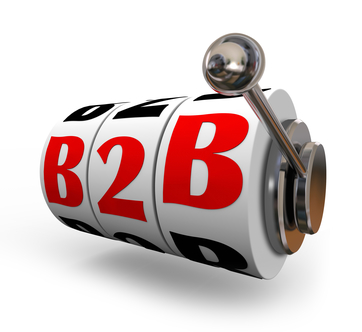Sunday, February 8, 2015
By CallFire, Follow me on Google+

There have never been more lead generation channels available to businesses. With so much choice, knowing where to start your efforts isn’t easy. Take a look at these five best practices for finding, nurturing and converting leads.
1) Identify Your Ideal Customer
High conversion rates come from lead gen programs that know where to concentrate their efforts. You can save a lot of time and money in the long run by investing in the search for you industry’s ‘ideal customer.’
The good news is, unless you’re a brand new business, all the data you need to build an ‘ideal customer’ profile is probably sitting on your database of existing customers. Analyze this database closely. Determine who the most profitable and least profitable customers are. Now cross-compare information from your best customers and build a profile of their defining characteristics. Do they live in a similar geographic location? Is this in proximity to your store? Do they tend to come from one demographic? Maybe the commonality has nothing to do with the customers, but they’re all being served by the same (apparently stellar!) employee. The more information you can mine, the more focused your lead gen campaign can be.
2) Use Intelligent Content
Against the white noise of internet activity, getting your message across is tough. It’s crucial that you gain the attention of prospects early on in the buy-cycle because this is when they are looking for information relevant to them.
This is where good content comes in. Use your most knowledgeable, most qualified employees or partners to create compelling, useful, unique content. White papers, industry analysis, blogging - use a variety of methods to make your online presence felt in as many places as possible. The emphasis here is on ‘thought leadership’ and expertise - don’t use these channels as a direct promotional tool or people will spot it a mile away and disengage. It’s about creating brand awareness and a sense of authority emanating from your company. It’ll take time, and the positive effects aren’t necessarily trackable, but becoming a known online authority on your industry, your business will ultimately benefit.
3) Have a Consensus
Before you start chasing leads, everyone in the organization needs to be on the same page regarding the definition of a ‘sales ready lead.’ In marketing, the readiness of the prospective buyer has to match the expectations of your sales person. Anything else is a recipe for confusion and dead ends.
Refer to the ‘ideal customer’ profile you built. Know when to pounce and when to nurture and you’ll waste fewer leads.
4) Know the Difference Between ‘Lost’ and ‘Mislaid’
A closed loop feedback system is essential to efficiency. Your sales team should be passing leads deemed ‘not sales ready’ back to the marketing team. This process must be incentivized, otherwise sales execs may be reluctant to relinquish ‘warm’ leads. Imbue your sales team with the confidence that any leads they were nurturing will be returned to them when ‘sales ready.’
Creating the requisite harmony between marketing and sales is one of the challenges of managing a large team. The infrastructure should work like an energy-efficient boiler, with unready leads as droplets of water. Not all droplets of water are contributing to the running of the boiler at any one time, but they are still ‘in the system’ ready to be converted to energy later on. Technologies like Cloud Call Center can help you manage these wayward leads and assign them to the right agent when the time comes to close the deal.
5) Automate!
Automation software is your friend. Use it. Tools like call tracking, cloud telephony and voice broadcast can drastically improve efficiency and gather crucial customer data that will help you provide a better service by making your customer behavior forecasting more accurate. The time saved by automation software could be worth thousands to your business, so use technology to perform repetitive tasks and free up employees to nurture more real prospects.
Again, these tools are just as useful for managing internal communications as they are for improving the customer experience. Automation and cloud telephony software improves communication between departments, streamlining processes and fostering among employees a better understanding of the overall workings of the business.
Together, these diverse strategies will improve your overall lead generation strategy. Remember, there are no hard and fast rules, only what’s best for your business at any given time. Deploy a tactical mixture of approaches, track their success as closely as possible, and review the results in six months. Not every lead gen tactic can be quantified financially (at least not accurately) but you will start to get a feel for what works over time.
